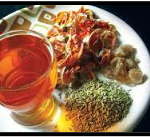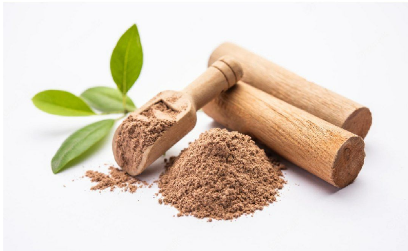About
Pistachios kept in a bowl and on a surface
Pistachios are the pistachio tree’s seeds. They belong to the family of cashews and are native to Central Asia and the Middle East and were first consumed as food as early as 7,000 B.C. Pistachios are typically green and mildly sweet. Even though they are referred to as nuts, pistachios are actually seeds. For thousands of years, people have eaten them.
Pistachios, like all nuts, are high in nutrients. However, Pistachios, on the other hand, have some distinguishing characteristics that set them apart. They can be eaten alone as a snack, on top of a salad, mixed with dried fruits in trail mix, baked goods, or as a crunchy coating for fish or meat. Pistachios can be eaten with the shell (in-shell) or with the shell removed (shelled), roasted, salted, flavored or raw. They are best stored in an airtight container in a cool, dry place once purchased. Moisture can not only soften them, but it can also cause them to go bad.
Nutritional Value
For 1 ounce of unsalted pistachios without shells (28g, or about 1/4 cup), the nutritional information will be;
- Calories – 165
- Fat – 13.4g
- Sodium – 2mg
- Carbohydrates – 7.8g
- Fiber – 2.8g
- Sugars – 2.1g
- Protein – 5.8g
- Potassium – 277 mg
- Carbohydrates
Pistachios have 18 grams of carbohydrates and 6 grams of fiber per 1/2 cup serving. Pistachios, like most other nuts, have a low glycemic index. Pistachios’ healthy fat and fiber have been shown to help lower blood sugar spikes after eating other high-carbohydrate foods like white rice, bread, and potatoes.
- Fats
A 1/2-cup serving of pistachios contains 30 grams of fat, 4 grams of which are saturated, 9 grams are polyunsaturated, and 16 grams are monounsaturated. Pistachios have one of the lowest fat contents of any tree nut.
- Proteins
A 1/2-cup serving of pistachios contains nearly 13 grams of protein, placing it in the protein group. 4 Pistachios are an excellent plant-based protein source for anyone, but especially for vegetarians and vegans.
- Vitamins and minerals
The green nut is high in vitamins, minerals, and phytonutrients. The nutrients in pistachio can be “seen” through the various colors. The actual nut’s green and yellow color is due to two carotenoids – lutein and zeaxanthin. The thin purple skin that surrounds the nut is high in anthocyanins, which are antioxidants found in grapes and cranberries.
Pistachios are also high in vitamin B6, phosphorus, and thiamin, and are a good source of copper. A half-cup of pistachios contains more potassium (625 milligrams) than a large banana (480 milligrams). Pistachios also have the highest phytosterol content of any nut (61 grams per 1 ounce serving).
How to eat Pistachio
A pastry with pistachios on it
As a result of their tough shell, pistachios can be difficult to eat at times. If there is a crack in the shell, pry it open with the shell of another pistachio. If there isn’t a crack, place the nuts on a cutting board, cover them with a towel, and hit them hard enough to crack the shells.
However, as we have already mentioned, Pistachio can be eaten in several ways, You can eat them raw, on their own, or in dishes such as Salads, gelato or ice cream, baklava (a sweet pastry), pesto, the nut butter, biscotti, granola, Turkish delicacy and yogurt.
5 Undeniable Health Benefits of Pistachio
Pistachios kept together
- Abundant in nutrients
Protein, fiber, and antioxidants are abundant in pistachios. They also contain a variety of other important nutrients, such as vitamin B6 and potassium.
- Lowers the Cholesterol level
One of the more well-known cholesterol-lowering foods is pistachio. According to research, eating one to two servings of pistachios per day can help lower cholesterol levels. Those who consume one serving per day experience a 9 percent decrease, while those who consume them twice a day experienced a 12 percent decrease.
Higher cholesterol level is a major risk factor for coronary heart disease. Pistachio contributes to Lowering cholesterol and reduces the risk of developing coronary artery disease. Furthermore, pistachios are high in antioxidants, which are important for cardiovascular health.
- Promotes healthy and glowing skin:
While the pistachio’s concentration of unsaturated fatty acids is what makes it healthy, saturated fatty acids also contribute to overall health. These saturated fats help to keep the skin from drying out. So, if your skin is already dry, not only can it help restore moisture but also can provide a soft glow to your skin.
Pistachio is one of the most recommended foods for people with atopic dermatitis and eczema. Furthermore, pistachio oil has skin benefits. The oil is widely used as a base in traditional massage therapies as well as aromatherapy.
- Prevents Anemia
Although pistachios themselves do not have high iron content, they do have a high copper content. Pistachio contains copper, which improves the body’s ability to absorb iron from food. This can assist you in avoiding conditions such as anemia.
- Aids in weight loss
Pistachios can help you lose weight quickly. For starters, they have the fewest calories of any nut. 1 oz has only 160 calories. Pistachios are also high in protein, fiber, and fats which are healthy. As a result, pistachios are a fairly filling food. Protein and fiber-rich foods tend to keep you full for a long time. As a result, filling foods help us consume fewer calories throughout the day.
04/05/22









